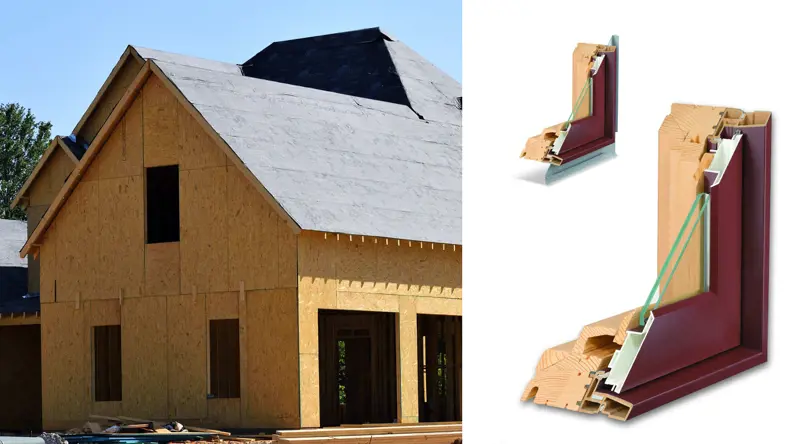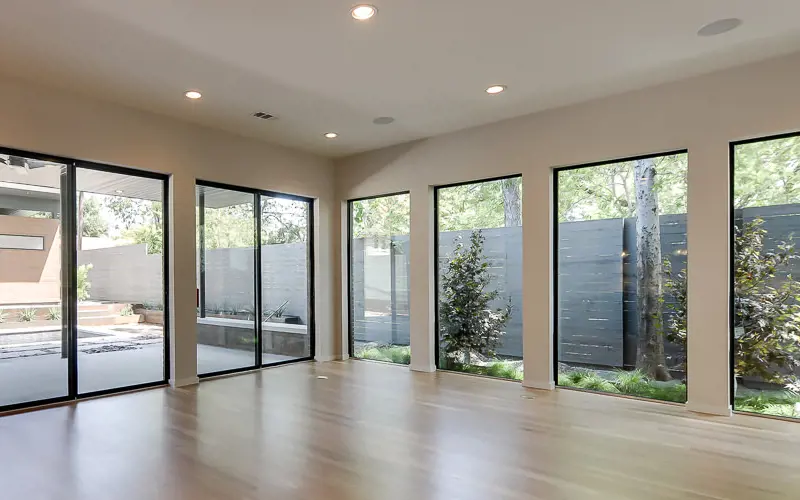
What Are The Different Parts of a Window?
Windows are the eyes to our homes, providing light, ventilation, and a view of the outside world. Understanding the different parts of a window is crucial for homeowners, especially when considering replacements or repairs. This article delves into the intricacies of various window types, including awning, casement, double-hung, single-hung, and sliding windows.
Importance of Understanding Window Parts
Windows are more than just glass panes; they are complex structures with various components that ensure functionality and aesthetics. Recognizing these parts can aid in customization when ordering new windows or identifying issues that require repair.
General Parts of a Window
Windows have a few general parts in common both in and out of the frame. You’ll find these parts on most windows regardless of size or type. They include:

Frame - The frame is the outer part of the window. It contains the entire window system and is formed by three parts: the sill (bottom), the jamb (left and right side), and the head (top).
Sill - The sill forms the bottom part of the window frame.
Jamb - The jamb is the vertical side of the frame on the right or left side of the window.
Head - The head is the horizontal part at the top of the window frame.

Sash - The sash is the part of the window that holds the glass. The sash is located within the window frame. Stiles, rails, glass, and grilles are all part of the sash.
Stiles - Stiles are the vertical parts found at the sides of a window.
Rails - Rails are the horizontal parts of a sash.
Glass - Glass is held within the sash. Modern windows use insulated glass packages made up of two or more panes of glass.
Awning Windows
Overview of Awning Windows
Awning windows open outward at the bottom, resembling an awning over a window or door. They offer a unique blend of style and function, with both advantages and disadvantages. For a deeper dive into the pros and cons of awning windows, refer to this article.
Frame and Sash Components
-
Window Frame: The frame is the outer structure of the window, encompassing the entire system. It consists of the sill (bottom), the jamb (sides), and the head (top). The frame provides support and shape to the window, ensuring its stability and durability.
-
Awning Sash: The sash holds the glass within the window frame. It includes elements like stiles (vertical parts), rails (horizontal parts), and glass. The sash is designed to tilt outward in awning windows, providing efficient ventilation.
Hinges and Hardware
-
Crank Handle: This is a pivotal component in awning windows, allowing users to open or close the window. The window sash tilts outward by turning the crank handle, enabling airflow.
-
Gear Mechanism: The gear mechanism works in tandem with the crank handle, ensuring smooth operation. It translates the rotational movement of the crank into the tilting action of the sash.
-
Linkages and Arms: These components connect the gear mechanism to the sash. They play a crucial role in the movement of the sash, ensuring it opens and closes seamlessly.
Casement Window
Overview of Casement Windows
Casement windows open outward horizontally hinged on the side. They offer a clear view and are known for their energy efficiency. For a comprehensive understanding of casement windows, check out this detailed guide.
Frame and Sash Components
-
Window Frame: Similar to awning windows, the frame of a casement window comprises the sill, jamb, and head. It provides the foundational structure for the window.
-
Hinges: These pivot points allow the casement window to swing open or close. They are typically located on the side of the window.
-
Crank Handle: Just like in awning windows, the crank handle in casement windows facilitates the opening and closing of the window.
-
Gear Mechanism: This mechanism ensures the smooth operation of the window when the crank handle is turned.
-
Linkages and Arms: These components connect the gear mechanism to the sash, ensuring the window opens and closes efficiently.
Single Hung and Double Hung Windows
Overview of Single and Double Hung Windows
Both single and double-hung windows are common in homes. While single-hung windows have only one operable sash (usually the bottom), double-hung windows have two operable sashes. For a comparison between the two, refer to this article.
Frame and Sash Components
-
Window Frame: The frame, consisting of the sill, jamb, and head, provides the foundational structure for both single and double-hung windows.
-
Balance Types: This refers to the mechanism that allows the sashes in double-hung windows to stay in place when opened or closed.
-
Locks & Other Hardware: These components ensure the security of the window, preventing unwanted access.
-
Tilt in sashes: This feature, especially common in double-hung windows, allows the sashes to tilt inward, making cleaning easier.
Glass and Glazing Options
-
Single, Double, Triple: This refers to the number of glass panes in a window. Multiple panes offer better insulation and energy efficiency.
-
Low-E coatings: Low-E (low-emissivity) coatings are thin layers applied to window glass to reduce heat transfer, making windows more energy-efficient.
-
Glazing types (tempered, laminated, etc.): Different glazing options offer varying levels of safety, noise reduction, and UV protection.
While many types of windows have several parts in common, other key parts make them different. Knowing and understanding the similarities and differences can go a long way if you’re looking to try new window types. Knowing the specific parts can help inform your decision and make a sometimes confusing process just a bit easier. For more information on window types and materials, visit Brennan’s vast selection of windows online.
Oops!
We don't currently serve your area but do want to help you plan your project. Try our Build & Price tool to get an idea of window & door costs within DFW. Your area may be higher or lower but at least you'll have some idea of the price.
Thanks for stopping by.







